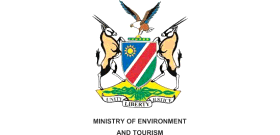 November’s Rainfall Brings New Safari Experiences to Botswana’s Okavango Delta
November’s Rainfall Brings New Safari Experiences to Botswana’s Okavango Delta
The Okavango Delta in northern Botswana stands as one of Africa’s most enchanting wilderness destinations, and November signals a profound shift in its natural rhythms. As the dry season surrenders to the first welcome rains, this iconic landscape undergoes a rapid transformation, offering a unique window for sub-Saharan African safari planners searching for fresh product knowledge and distinctive experiences to share with clients. November in the Okavango is not merely a month—it is a season of metamorphosis, brimming with opportunity for those eager to witness nature’s drama in real time.
As the calendar turns, the Delta’s scenery evolves at a remarkable pace. Early November is defined by intense heat, with temperatures regularly surpassing 35°C. The air is thick and heavy, a tangible anticipation of the rains to come. Mornings that were once crisp in October grow warmer and, at times, humid. The first storms roll in by mid-month, sometimes with dramatic thunderheads and sudden downpours that rejuvenate the parched earth. Within days, brittle brown grasslands burst forth with new green shoots, and trees unfurl a fresh canopy of leaves. The floodplains shift to an emerald tapestry, reflecting the interplay of sun and cloud—a spectacle that photographers and nature lovers alike find irresistible.
Despite the arrival of local rains, the overall Delta water levels are still primarily influenced by the Okavango River’s distant headwaters in Angola. This means that while some channels deepen, others remain shallow, creating a dynamic landscape where every visit feels distinct. The rapid change from dusty golds to lush greens is a compelling reminder of Africa’s resilience and cyclical renewal, and it makes November a time when the Okavango feels most alive and unpredictable.
This period of transition has a profound impact on the region’s wildlife. As new grazing grounds emerge, animals that congregated around shrinking waterholes during the preceding months begin to disperse into the wider landscape. Yet, there is still a remarkable density of game around the perennial lagoons and water channels—elephants, buffalo, and a variety of antelope remain, sustaining excellent opportunities for wildlife observation. Predators such as lions, leopards, and spotted hyenas continue their patrols, drawn by the abundance of prey on the newly revitalized plains.
November also ushers in the calving season for impala, tsessebe, and other antelope species. The bush teems with the sight of newborn calves, their unsteady legs a testament to the renewal underway. This surge of vulnerable young attracts opportunistic predators, resulting in particularly gripping scenes of predator-prey interaction. The air buzzes with life: frogs emerge in the ephemeral pools left by recent rains, insects swarm and take flight, and reptiles bask in the renewed warmth of the sun. For birders, November is a treasure trove—migratory swallows, bee-eaters, and kingfishers arrive in force. Along the water’s edge, herons, storks, and jacanas thrive in step with the expanding waterways. For those with an eye for avifauna, this marks the true beginning of the Delta’s most colorful season.
Animal behavior during this transitional period reflects both abundance and adaptation. As the landscape opens up, wildlife disperses, moving more freely and behaving with a level of authenticity sometimes missing during the dry season’s congregation. For guides, this dispersal presents both a challenge and an opportunity—the need for patience and tracking skill is greater, but the reward is an experience that feels genuine and unscripted. Predators capitalize on the calving herds, with lions employing patient ambush tactics and leopards slipping through the thickening foliage. The first rains also stimulate nocturnal activity; cooler evenings draw hyenas, servals, and genets into the open, while elephants shift into the now-revitalized mopane woodlands in search of fresh browse. The atmospheric drama of thunder, lightning, and the scent of wet earth only adds to the immersive quality of a November safari.
For those planning journeys or advising clients, November in the Okavango requires both flexibility and a spirit of adventure. Weather patterns can change rapidly—afternoon storms may temporarily halt game drives or delay light aircraft flights, but these showers are usually brief and often followed by crystalline air and spectacular sunsets. It’s essential to prepare for the heat and humidity, with lightweight, breathable clothing, robust sun protection, and waterproof covers for cameras and gear. A compact rain jacket is invaluable for sudden downpours, and insect repellent along with malaria precautions should be high priority for all travelers.
Choosing accommodation is key. Camps situated near permanent water channels continue to attract wildlife even as the landscape changes. Lodges within the Moremi Game Reserve and private concessions on the Delta’s fringes offer reliable access regardless of rainfall, ensuring a seamless experience for guests even in unpredictable weather. Another significant advantage of November is its status as Botswana’s low season: rates are generally more competitive, and visitor numbers are lower, resulting in a more intimate wilderness encounter and increased value for African operators looking to diversify their safari offerings.
Activities in November remain as varied as the landscape itself. Early morning and late afternoon game drives are ideal for capitalizing on peak animal activity, while water-based excursions—be it by motorboat or the traditional mokoro dugout canoe—offer a tranquil perspective on the Delta’s awakening ecosystems. The interplay of water, light, and wildlife creates some of the year’s most memorable photographic opportunities, perfect for those seeking to capture the spirit of Africa’s wild heart.
Ultimately, November in the Okavango Delta is a celebration of transformation. For industry professionals across sub-Saharan Africa, it represents an opportunity to reposition safaris as dynamic, ever-changing experiences rather than static, seasonal offerings. The sense of wilderness, solitude, and renewal is palpable, making it a compelling time for those who seek the essence of Africa in its most authentic form. The lessons of November—of adaptation, resilience, and the beauty of change—resonate far beyond Botswana’s borders, offering inspiration to shape the future of the continent’s travel sector as it rises to meet new challenges and opportunities in the years ahead.
